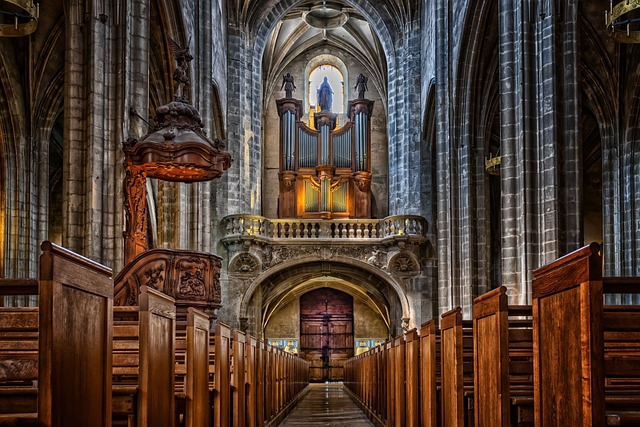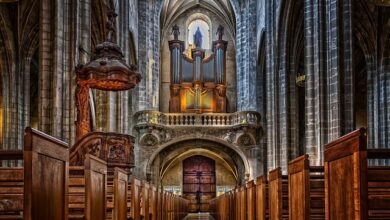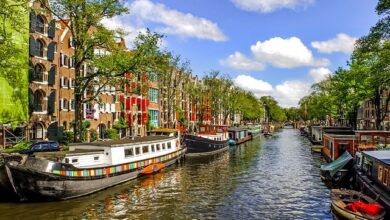Dutch Castles and Historical Landmarks Worth Visiting

The Netherlands is renowned for its picturesque canals, windmills, and tulip fields, but it also boasts a rich history reflected in its stunning castles, fortresses, and historical landmarks. From medieval strongholds to opulent palaces, these sites offer a glimpse into the country’s past, blending architectural grandeur with fascinating stories. Whether you’re a history enthusiast, an architecture lover, or simply looking for unique places to explore, here’s a list of Dutch castles and landmarks that are well worth a visit.
1. Castle de Haar
Location: Utrecht
Why Visit?
Castle de Haar is the largest and most luxurious castle in the Netherlands. Built in the late 19th century, this neo-Gothic masterpiece was designed by architect Pierre Cuypers and commissioned by the wealthy Van Zuylen van Nijevelt family. The castle sits on the ruins of a medieval fortress and features towers, moats, gardens, and lavish interiors filled with art, antiques, and period furniture.
- Highlights:
- Grand halls adorned with chandeliers and tapestries.
- Beautifully landscaped gardens with fountains and sculptures.
- Exhibitions showcasing the lives of European nobility.
- Tip: Plan your visit during spring or summer when the gardens are in full bloom.
2. Muiderslot (Muiden Castle)
Location: Near Amsterdam
Why Visit?
One of the best-preserved medieval castles in the Netherlands, Muiderslot dates back to the 13th century. Located along the banks of the Vecht River, this moated fortress served as both a defensive structure and a residence for knights and nobles. Today, it houses a museum dedicated to medieval life.
- Highlights:
- Authentic medieval architecture and weaponry displays.
- Interactive exhibits about daily life in the Middle Ages.
- Picturesque views of the surrounding waterways.
- Tip: Combine your visit with a stroll through the charming town of Muiden.
3. Kasteel Doorwerth
Location: Near Arnhem
Why Visit?
This 13th-century castle is nestled in the Veluwe region, surrounded by lush forests and heathlands. Originally a fortified manor, Doorwerth has been expanded over centuries, blending medieval, Renaissance, and modern elements. It now serves as a museum and event venue.
- Highlights:
- Tower rooms offering panoramic views of the estate.
- Guided tours detailing the castle’s transformation over time.
- Nearby hiking and cycling trails through Hoge Veluwe National Park.
- Tip: Rent a bike and explore the scenic countryside around the castle.
4. Paleis Het Loo
Location: Apeldoorn
Why Visit?
Paleis Het Loo, or “Het Loo Palace,” was once the royal residence of the Dutch monarchy. Built in the 17th century, it combines Baroque elegance with meticulous symmetry. After extensive renovations, the palace reopened in 2022 as a museum showcasing the history of the House of Orange-Nassau.
- Highlights:
- Lavishly decorated state rooms and private chambers.
- Expansive formal gardens inspired by Versailles.
- Exhibits featuring royal artifacts, carriages, and costumes.
- Tip: Don’t miss the multimedia presentations that bring the palace’s history to life.
5. Slot Loevestein
Location: Between Gelderland and North Brabant
Why Visit?
Slot Loevestein is a medieval fortress located at the confluence of the Maas and Waal rivers. Built in the 14th century, it served as a military stronghold and later as a prison. One of its most famous prisoners was Hugo Grotius, who famously escaped in a book chest.
- Highlights:
- Impressive fortifications and dungeons.
- Stories of intrigue and daring escapes.
- Boat tours to reach the castle, adding to the adventure.
- Tip: Explore the nearby Biesbosch National Park for a day of nature and history combined.
6. Amerongen Castle
Location: Utrecht
Why Visit?
This elegant 17th-century castle reflects the transition from medieval fortresses to stately homes. Surrounded by a moat and expansive parklands, Amerongen Castle is steeped in aristocratic history. It currently functions as a museum and wedding venue.
- Highlights:
- Richly furnished rooms with original artwork.
- A collection of horse-drawn carriages and sleighs.
- Peaceful walking paths through the castle grounds.
- Tip: Visit during autumn when the foliage creates a magical atmosphere.
7. Castle Nyenrode
Location: Breukelen
Why Visit?
Dating back to the 13th century, Nyenrode Castle is one of the oldest surviving castles in the Netherlands. It now houses Nyenrode Business University, but visitors can still admire its historic charm and attend events hosted on the premises.
- Highlights:
- Medieval architecture paired with modern academic facilities.
- Scenic views of the Vecht River.
- Occasional open days and guided tours.
- Tip: Check ahead for public access opportunities, as parts of the castle are restricted.
8. Fort Pannerden
Location: Near Arnhem
Why Visit?
Fort Pannerden is part of the New Dutch Waterline, a UNESCO World Heritage Site. This underground fortress was built in the 19th century to protect the Netherlands against invasions. Its unique design includes hidden tunnels and bunkers.
- Highlights:
- Underground exploration of secret passages.
- Insights into military strategy and engineering.
- Free admission and volunteer-led tours.
- Tip: Bring a flashlight for exploring the darker areas!
9. Bourtange Fortress
Location: Groningen
Why Visit?
Bourtange is a star-shaped fortress village frozen in time. Originally constructed in the 16th century to defend against Spanish forces, it has been meticulously restored to its former glory. Visitors can wander through cobblestone streets lined with traditional houses and shops.
- Highlights:
- Living history reenactments and festivals.
- Museums depicting life in the fortress.
- Unique aerial views of the star-shaped layout.
- Tip: Time your visit to coincide with themed events like medieval markets.
10. Rijksmuseum Het Catharijneconvent
Location: Utrecht
Why Visit?
While not a traditional castle, this former convent turned national museum is a treasure trove of Dutch religious art and artifacts. Its exhibits span centuries, covering everything from medieval manuscripts to Protestant reformations.
- Highlights:
- Sacred objects, paintings, and liturgical garments.
- Architectural remnants of the original convent.
- Tranquil cloister gardens.
- Tip: Pair your visit with a walk through Utrecht’s historic city center.



